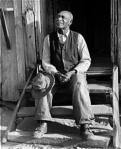So many people believe that religion cannot change – most especially the sacred scripture of their religion. To use Christianity as an example, the words of the Bible do not change and therefor our understanding of it is timeless – all that needs to be done is to read its words plain and simply. That is what I see repeatedly from both conservative literalists Christians and from many atheists. I find it amazing that such a wrong idea can be so strongly promoted by those at the opposite ends of belief. I imagine that this is probably the only area of agreement that literalists Christians and many atheists have. And it is ironic that it is so very wrong.
 I wrote a paper for one of my graduate classes a couple of years ago that illustrate very nicely some of the reasons why it is wrong. It doesn’t hit at all the reasons, but gives an idea about how religious believers understanding of their sacred scripture can and does change over time. Although this paper focuses exclusively upon slavery and the Bible in the pre-civil war United States, the idea behind it applies to any and all scriptures – such as the Qur’an for example – and even such documents as the United States Constitution.
I wrote a paper for one of my graduate classes a couple of years ago that illustrate very nicely some of the reasons why it is wrong. It doesn’t hit at all the reasons, but gives an idea about how religious believers understanding of their sacred scripture can and does change over time. Although this paper focuses exclusively upon slavery and the Bible in the pre-civil war United States, the idea behind it applies to any and all scriptures – such as the Qur’an for example – and even such documents as the United States Constitution.
The Bible Wars: It’s Use For and Against Slavery
Slavery still exists today, not only in other countries but even here in the United States. However, today slavery is almost universally condemned instead of almost universally accepted as it once was. Governments have made slavery illegal. Religion and Christianity almost universally condemn it now. Not so very long ago this was not true.
In colonial America and in pre-Civil War United States slavery was a flourishing institution, one that was supported by many arguments ranging from the economic to the supposed nature of blacks. One argument of special importance and interest was the one based upon the Bible. Both the proslavery people and the abolitionists claimed Biblical support for their beliefs and positions. In this paper I plan to look at how the Bible was used to both justify and argue against slavery.
1. Pro-slavery arguments
The pro-slavery side had the initial advantage in using the Bible to support their views. The reason for this is that no special interpretation or treatment of the Bible was needed to justify the institution of slavery. Nowhere within the Bible does anyone condemn slavery, not even Jesus. It was an accepted institution, one that seemingly was considered both normal and moral. Because of this, the proslavery groups could rely on a literal reading of the Bible and upon Christian history to make their case.
Most Christians throughout history did not see the practice of slavery as conflicting with the Bible. Many church leaders from the first days of Christianity had slaves. Church policy since its earliest days supported the institution of slavery and the rights of slaveholders. Several early Christian writings include codes of household management; how husbands, wives, children, slaves, and slaveholders should behave. In these codes, slaves “were told to subordinate their wills to the wills of their master” (Glancy 55). Christian teachings often seemed to reinforce “the power of the slaveholder, even as they affirmed the dignity of the slave in God’s eyes.” (Glancy 53).
In fact, although there are some hints that some early Christians might have questioned slavery, real and unambiguous writings against slavery as being un-Christian did not come until medieval times when people such as Gregory of Nissa, Saint Patrick, and Saint Eligus started to write and speak out against slavery. However, other church leaders, such as Saint Augustine, Saint Aquinas, Calvin, and Martin Luther wrote that slavery was not un-Christianity. Although slavery eventually disappeared in Christian Europe it was still not widely condemned or considered un-Christian by most.
Due to this weight of history, and to a literal interpretation of the Bible, the development of a Christian defense of slavery in the United States did not come about until the early 19th century. In the years before this in America there had been no need for one. It was not until the rise of a larger abolitionist movement and a radical form of antislavery during the 1830’s that proslavery literature began to become significant.
The fact that the proslavery side had a plain reading of the Bible on their side can be readily seen in one of the first conflicts with the abolitionists. Initially the abolitionists had argued that the word translated as “slave” in the Bible actually meant “servant” and thus there was no slavery in the Bible. The proslavery side quickly pointed out that this was not only not how it had been historically translated but that the best and newest methods of biblical scholarship showed that the word in question meant slave and not servant. What is ironic is that those who used and understood the Bible literally to argue for slavery were able to use the new biblical criticism of the Bible, a methodology that would show the problems inherent in a literal understanding of the Bible, to support their position.
Those arguing that slavery was Biblical used a variety of arguments based on quotes from the Bible. They used the story of the Centurion’s Servant (Luke 7:1 – 10; Matt 8:5 – 13) to show that Jesus had not only met slaves but also had commended the slave’s owner, a Roman soldier, as a faithful man such as he had not seen even in Israel.
Taking the argument even further, they argued, on the basis of the example of the Roman soldier above and Jesus’ praise of him, as well as other verses, that not only was slavery not immoral, but that the proper Christian stance towards the world was hierarchical and patriarchical. “Importantly, Jesus praised the centurion’s use of commands to order military and domestic subordinates….The plain sense of this language means that military hierarchy and other forms of patriarchy ought to order human relations, especially between master and slave.” (Harrill, 183).
When the abolitionists used the Golden Rule to argue against slavery, the proslavery groups responded by referring to the above verses, saying that Jesus was not teaching egalitarianism, but rather patriarchical love. Such love does not make men social equals, but instead means that “the master should treat his slave as if the master, imagining himself a slave and aware of his own good, would like to be treated.” (Harrill, 185).
Using a plain reading of the Bible with the understanding that passages were to be understood in light of patriarchalism, and with a selective use of the new biblical criticisms, the proslavery groups defended the institution of slavery as being Biblical and Christian.
2. Abolitionist Arguments.
As I mentioned above, the proslavery groups had the easier argument to make in regards to the Bible and slavery. This was something the abolitionists recognized from the beginning. Because of this, instead of a literalist approach they used an interpretive approach.
Of course the proslavery groups interpreted passages too, as seen by their interpretation of the meaning of the Golden Rule. And the proslavery groups were influenced in their interpretations by outside sources such as their economic and political views and their prejudices. However, the difference was that while the proslavery groups found their key to interpreting biblical texts within the Bible (patriarchy), the abolitionists found their key from outside the Bible.
First and foremost of these outside keys was the outrage that slavery inflicted on their sense of morality. Regardless of the source of this feeling, morally they knew that slavery was wrong and that therefore any interpretation of the Bible that defended slavery was flawed. They had only to be perceptive and knowledgeable enough to discover the flaw. Or, failing that, some counseled rejecting the Bible altogether as a moral guide to slavery. “Garrison concluded that slavery, like just war and woman’s suffrage, ‘was not a bible question’, since nothing in regards to controversial matters had ever been settled by the Bible.” (Harrill, 176). While most did not go as far as Garrison, some did. All though were motivated by the same sense of moral outrage.
A large reason why this attempt to use outside sources to aide in interpreting the Bible was possible was due to the Enlightenment. It was an age of questioning everything, including Christianity and the Bible. It was an age of discoveries that made old understandings of the Bible questionable. The age of the earth, the orbiting earth and central sun, evolution, and other discoveries of science showed that the Bible could not be understood literally in regards to matters of how the physical universe worked.
The new higher criticism coming out of Germany was becoming increasingly influential among American scholars. It demonstrated that Moses did not write the Torah, that the Bible had multiple authors and did not always agree with known history and, most importantly, that the Bible might not always be the best guide in understanding itself.
At the same time a new religious movement had developed and was expanding, that of evangelism with an emphasis on a personal experience of God and not necessarily to adherence to old doctrine. Quakers were the earliest evangelical group to start to criticize and work for abolition. However they were joined by other such new evangelical religions as Methodists and Baptists.
It took some trial and error for abolitionists to find their way to their final arguments. One of their first attempts was to deny that Jesus had ever met any slaves, saying that the word translated as slave could also and more probably did mean servant. However, as noted above, that argument did not hold up to the new scholarship.
From there, they looked for another key by which to understand the Bible and its verses about slavery, one that would hold up to the new biblical criticism and would also align with their moral understanding of the Bible. Part of the key consisted of viewing the Bible as a work in progress instead of a static work with a finished understanding.
Taking their cues from their times, a time when progress was not only much talked about but actually being seen in the industrial and scientific revolutions, they argued that the Bible had “seeds” planted within it that would blossom and bear fruit as societies grew in knowledge and moral sensibilities. They argued that Jesus knew any condemnation of slavery would not take root in the culture and society of his age. Instead he planted a seed that would grow and blossom in the fullness of time. History, and our understanding of the Bible, were not static but were instead dynamic, growing, and progressive.
With this understanding of the Bible and how to read it the abolitionists then argued that the Golden Rule, as related in Matthew 7:12 and Luke 6:31, was the seed that Jesus planted and that now was the time for its blossoming. “True Christianity, through ‘fair application’ of the Golden Rule and related immutable principles such as charity and love of neighbor, is a Christianity against slavery.” (Harrill, 171)
The below quote of Dr. Thornton’s, taken from a report about slavery given to the Presbyterian Synod of South Carolina highlights this difference between the abolitionists and the proslavery groups.
“Opposition to Slavery has never been the offspring of the Bible. It has sprung from visionary theories of human nature and society. It has sprung from the misguided reason of man. It comes as natural, not as revealed truth; and when it is seen that the Word of God stands in the way of it, the lovely oracles will be stripped of their authority, and reduced to the level of mere human utterances.” (National Era).
Where the abolitionists would disagree with Dr. Thornton, is that this scheme amounted to “mere human utterances”. Instead they would say that, along with the Bible, God also created the natural world and the mind of man with its ability to reason.
Further, God had implanted within humanity a sense of morality. They would argue that theirs was taking the whole of what God had given them, whereas the literalist views of Dr. Thornton and the proslavery groups had rejected part of God’s revelations and gifts.
One final fact to note is that just because a white person was an abolitionist does not mean that they were not prejudiced. An argument that was used in conjunction with the early claim that Jesus had never met a slave was that if Jesus Christ had met slaves and condoned the institution, then it would have been the slavery of his time, a slavery involving whites. “This reductio ad absurdum disproof…. reveals the racism present in some abolitionist arguments: surely Jesus Christ agreed with the American beliefs that white people should not be enslaved.” (Harrill, 169).
While this was not an argument that was used as much after the abolitionists lost the argument on whether Jesus had met slaves, it does show that a white view of abolitionism might, and did, differ from that of an African American of the times.

3. Free Blacks and Slaves
“Dark and Dismal was the day
When slavery began
All humble thoughts were put away
Then slaves were made by man.”
The above words are part of a poem by Jupiter Hammon, the first black poet in America and a slave since birth. The 25 stanza poem was titled: “An Essay on Slavery with Submission to Divine Providence Knowing that God Rules Over All Things” and, unlike his other poems and essays, it was never published; most likely due to its controversial nature.
In the beginning, blacks resisted Christianity. They feared that their master’s religion was meant as a means of control and oppression. At the time, the Christianity being preached was. As taught to the slaves, Christianity was strongly Calvinistic and taught that everyone had been put in their place by God, and that given this instead of questioning their God ordained station they should do their best within that station. Most African Americans were not attracted to this message.
Some blacks though did accept the religion of their masters; for example, Jupiter Hammon. Born a slave in Lloyd Harbor, NY in 1711, property of the Lloyd family of Queens, NY, he was fortunate enough to have owners who insisted that he attend school and learn to read and write. He was born and became Christian before the Great Awakening and the arrival of the evangelical Christianities that did not preach a religion of acquiescence to oppression, and so had a foot in both worlds.
The Christianity taught and accepted by Jupiter at his birth, and rejected by many blacks, was of a Calvinism that “did not believe that Christians, and even less so slaves, should do anything that distracted from a contemplation of a heavenly afterlife.” (Day, 2) This version of Calvinism, and not the one that “emphasized participation in the world with a view toward transforming it” (Day, 2) that many of the whites followed , was what the blacks were taught, when any were taught at all to become Christians. From the same poem:
“When God doth please for to permit
That slavery should be
It is our duty to submit
Till Christ shall set us free.”
But, while Christianity was taught as a means of oppression, it did not stay such. Instead it changed and became a means of resisting oppression; sometimes actively, sometimes more quietly. It did so by giving blacks “a sense of common identity and purpose that created the conditions for organization and collective action.” (Day, 3).
The African American was treated as and had the status of property, not person. Even Hammon’s owners, who by all accounts were good masters who treated him well, lists Hammon, along with their other slaves, as property in their ledgers, along with cattle and other goods. To resist this reduction to being nothing more than property, African Americans had to form a new identity as well as a new community. A large part of that new identity came with the arrival of the Great
Awakening. The Great Awakening created a number of new voices within religion, ones that were not part of the established religions with their political and economic ties, which allowed them to “reevaluate the old theologies and speak out against slavery as an organizational endeavor.” (Day, 15).
As a result of increasing literacy among the African Americans and the increasing numbers of itinerant ministers who were preaching a message of resistance to worldly oppression and not submission, blacks started to convert to Christianity in increasing numbers. They also started to assume leadership roles as preachers and ministers as well as organizing churches.
As they did so their understanding and ways of interpreting the Bible differed from that of not only their white masters and white society in general, but even from that of the white abolitionists. In fact, blacks often found themselves at loggerheads with their white abolitionist allies.
For example, the slave narrative became popular means by which the abolitionist movement pressed their cause. However, most of these narratives that had the approval of the white abolitionists were those that “focused on the ‘objective facts’ of slavery rather than on individuals’ ideas and interpretations.” (Day, 88).
This control of the narratives allowed the white abolitionists to control the content and priorities of the anti-slavery movement, resulting in an anti-slavery movement that was against slavery but not necessarily for equality. Even though sympathetic to the troubles of the blacks, most whites were not willing to give up power nor to examine with a critical eye their own views and thoughts about black.
Blacks agreed with and used the argument used by the white abolitionists of the Golden Rule being the key to understanding and interpreting the Bible. However, they also identified both themselves and their plight with biblical figures, most especially Moses and the Exodus narrative, although the figure of Christ as the “Suffering Servant” was also important. Blacks found much support and strength through such imagery and identification; and especially in the knowledge that both the Jews and Jesus were triumphant at the end of their sufferings.
And just like the earliest Christian groups, many blacks found the book of Revelation meaningful. It pointed to a time when slavery and prejudice would end, a time of the Apocalypse when “an abolitionist Warrior Jesus” (Harrill, 179) would come in wrath and retribution to end slavery and establish justice for the blacks.
Not only did the Bible provide support and comfort, but many blacks found within it the sense of group identity and organization necessary for an active resistance to slavery. Those times of unrest among the blacks that led into actual revolt against their masters were most often preceded by a rise in religious activity.
While the black community did have much in common with the white abolitionists, their goals and views were not identical. There were significant differences in how they understood and used the Bible. Given their differing social standings and needs this was inevitable.
4. Final Notes
These changes to Christian understanding of the Bible have now become ingrained and are considered the orthodox understanding today. Except for some small groups, even those Christians who claim to believe the Bible literally use this new interpretation of the Bible, this interpretation that takes into account ideas from outside the Bible to understand it, when they claim that the Bible is against slavery. This is a far cry from the literalists of the pre-Civil War era, and a change that has continued to create social changes up to today.
Read Full Post »

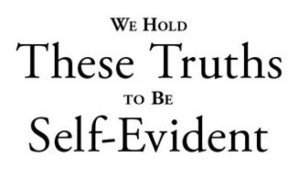 many short wars that have punctuated its existence: the war of 1812, the Civil War, WW 1 & 2, Vietnam, and all the other named wars. Instead, the war I am referring to has been one long continuous war, one whose existence was foreshadowed by the ideals that created the Revolutionary War and were then given form in the Declaration of Independence. This foreshadowed war flamed into existence by the creation, ratification, and implementation of our flawed Constitution.
many short wars that have punctuated its existence: the war of 1812, the Civil War, WW 1 & 2, Vietnam, and all the other named wars. Instead, the war I am referring to has been one long continuous war, one whose existence was foreshadowed by the ideals that created the Revolutionary War and were then given form in the Declaration of Independence. This foreshadowed war flamed into existence by the creation, ratification, and implementation of our flawed Constitution.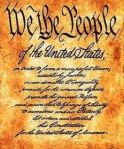 translation. Not all men were treated equal, even under the law. In fact, inequality of the most brutal kind was actually protected by the Constitution. And, despite Abigail Adam’s words to her husband to not forget the women, women were forgotten.
translation. Not all men were treated equal, even under the law. In fact, inequality of the most brutal kind was actually protected by the Constitution. And, despite Abigail Adam’s words to her husband to not forget the women, women were forgotten.


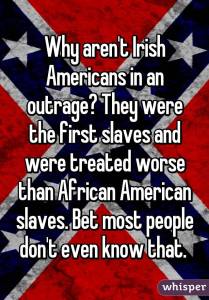 blacks today. Most blacks, though, are very well aware of this.
blacks today. Most blacks, though, are very well aware of this.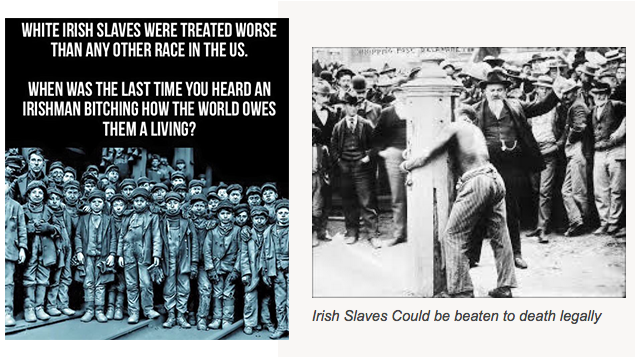

 slaves. However, not all forms of slavery are alike. That of the indentured servant was of limited duration, not inheritable, and did not reduce them totally to the status of property.
slaves. However, not all forms of slavery are alike. That of the indentured servant was of limited duration, not inheritable, and did not reduce them totally to the status of property.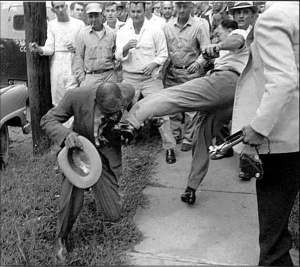 – they do this too because they feel that they are being personally attacked when racism and slavery are brought up. This Irish slave myth one such way such people protect their views, and avoid considering the possibility that they actually may be racist.
– they do this too because they feel that they are being personally attacked when racism and slavery are brought up. This Irish slave myth one such way such people protect their views, and avoid considering the possibility that they actually may be racist.
 stood up firmly for that principle. In fact, they gave way and made what I would characterize as an evil compromise (I will note that those opposed to slavery argued for slaves not being counted for the census in order to reduce the power of the Southern states). They agreed to continue the belief and practice of treating some people as nothing more than property and, even worse, gave those with the greatest interest in promoting this belief and practice the means to continue it.
stood up firmly for that principle. In fact, they gave way and made what I would characterize as an evil compromise (I will note that those opposed to slavery argued for slaves not being counted for the census in order to reduce the power of the Southern states). They agreed to continue the belief and practice of treating some people as nothing more than property and, even worse, gave those with the greatest interest in promoting this belief and practice the means to continue it. Consider also that the Northern States and President Lincoln did not go to war with the Southern States to abolish slavery, but to preserve the Union. If there were no union to preserve, there would have been no war. There would have been no war that resulted in abolishing slavery in North America in the 1860s.
Consider also that the Northern States and President Lincoln did not go to war with the Southern States to abolish slavery, but to preserve the Union. If there were no union to preserve, there would have been no war. There would have been no war that resulted in abolishing slavery in North America in the 1860s.






